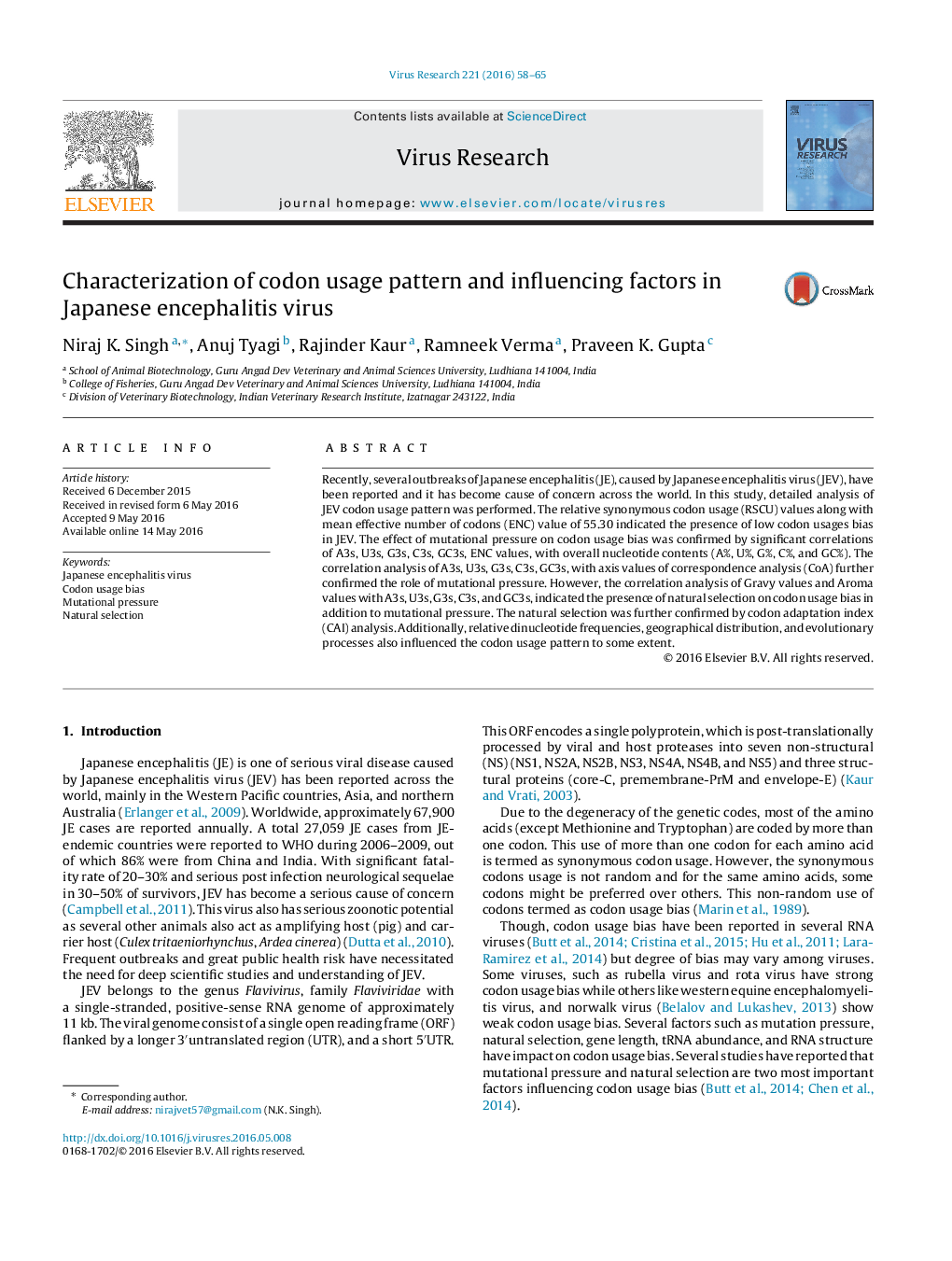| Article ID | Journal | Published Year | Pages | File Type |
|---|---|---|---|---|
| 3427860 | Virus Research | 2016 | 8 Pages |
•Low codon usage bias was observed in various geographical isolates of Japanese Encephalitis Virus (JEV).•The low codon usage bias of JEV may allow it to replicate more efficiently in the host.•Both Natural selection and mutational pressure influenced the codon usage patterns in JEV.•Relative dinucleotide frequencies and geographical distribution influenced the codon usage pattern to some extent.
Recently, several outbreaks of Japanese encephalitis (JE), caused by Japanese encephalitis virus (JEV), have been reported and it has become cause of concern across the world. In this study, detailed analysis of JEV codon usage pattern was performed. The relative synonymous codon usage (RSCU) values along with mean effective number of codons (ENC) value of 55.30 indicated the presence of low codon usages bias in JEV. The effect of mutational pressure on codon usage bias was confirmed by significant correlations of A3s, U3s, G3s, C3s, GC3s, ENC values, with overall nucleotide contents (A%, U%, G%, C%, and GC%). The correlation analysis of A3s, U3s, G3s, C3s, GC3s, with axis values of correspondence analysis (CoA) further confirmed the role of mutational pressure. However, the correlation analysis of Gravy values and Aroma values with A3s, U3s, G3s, C3s, and GC3s, indicated the presence of natural selection on codon usage bias in addition to mutational pressure. The natural selection was further confirmed by codon adaptation index (CAI) analysis. Additionally, relative dinucleotide frequencies, geographical distribution, and evolutionary processes also influenced the codon usage pattern to some extent.
